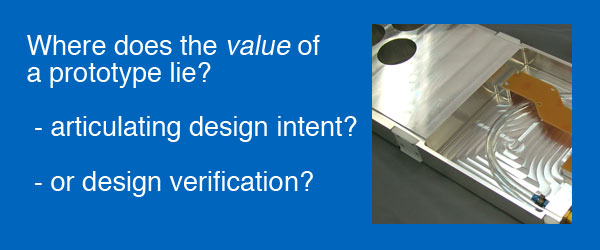
We recently wrote about the amazing potential of 3-D printing, which is now an industry in itself, having evolved from the rapid prototyping side of product development.
A key advantage of rapid prototyping has always been the ability to create a physical representation of a new component in just a couple of days. This undoubtedly is of great benefit but I find myself questioning whether people recognise that the benefit has a boundary, over which the technology can easily lead down the wrong path.
The problem is that rapid prototyping is generally not the right choice of production technique for volume manufacture because of limitations with available materials and both the costs and practicalities associated with volume production. Physical characteristics such as weight, rigidity, flexibility and thermal conductivity could be completely different, severely limiting its use as a testable prototype and calling into question how much we can actually expect to learn from any part produced by the technique. This means that, other than form, parts made may bear little resemblance to the actual item that will be manufactured.
It’s safer then, to use terms such as “Space” or “Appearance Model” instead of prototype, as these former terms portray the feeling that the primary function of the model is to articulate appearance and to a certain extent the design intent.
Consider this: if a product or component is designed to be manufactured from aluminium alloy using a casting process, then what is the point of a prototype that has been 3D-printed? For that matter, if our same aluminium alloy casting acts as a heat sink then what are the pitfalls in machining a prototype from a solid block of wrought Aluminium which will typically have 25 – 30% better thermal conductivity?
On the basis that engineering design changes are faster and cheaper to make early in the design cycle, we would argue that by the time we get to prototyping there should be very little left to change. We therefore view prototyping as an exercise is design validation before we close the design phase and long before we commence with manufacturing documentation.
The Zero-defect model serves a very important role: it actually tests the manufacturing documentation and the manufacturing process itself. As it answers the question “did we build it right” and is therefore a critical part of product verification. As this model ought to be produced using production documentation, tooling and processes it is therefore way down-stream from our prototyping phase and out of bounds for this topic.
Prototyping has long been accepted as a standard and integral part of the product development process, and I’m not here to argue to against that! What I would like to argue FOR is a more intelligent approach to prototyping.
Ask yourself: what is it that I hope to achieve through building my prototype, and what is it that the prototype will not teach me? It might be possible to maximise the benefit of prototyping by doing something unconventional, say through machining a prototype from piece of scrap cast metal rather than from a wrought bar stock. It will be far closer to the finished article in terms of material properties, and as a result, far more useful for testing and effective “design validation”.
Warley Design provides mechanical design, engineering and product development services to a broad range of industries. To find out more call us now on 01277 261066 or email us.